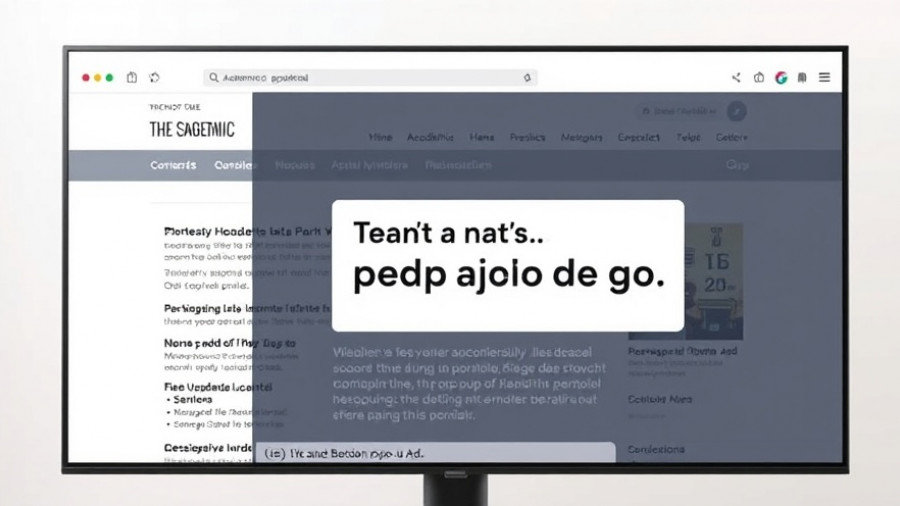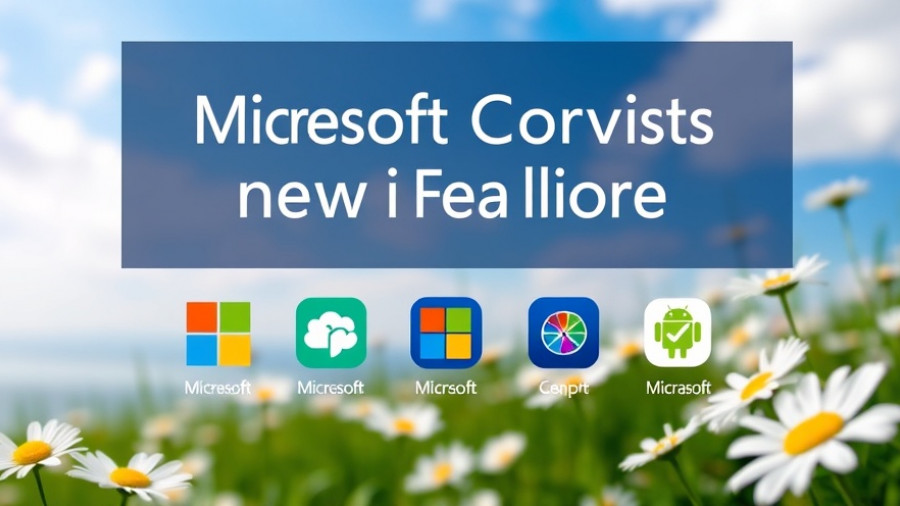
The Evolution of AI in Microsoft’s Copilot
Microsoft is making significant strides in the realm of artificial intelligence (AI) by integrating Anthropic’s AI models into its Microsoft 365 Copilot. The collaboration is not just a move toward diversification but also represents a notable shift in Microsoft’s AI strategy as it seeks to enhance its AI capabilities across various applications.
Understanding the New Partnership with Anthropic
Since 2021, Anthropic has emerged as a key player in the AI sector, founded by former OpenAI executives. As Microsoft deepens its collaboration with Anthropic, users will soon be able to utilize Anthropic's Claude models alongside OpenAI models. This approach offers users more flexibility in designing workflows, ensuring they can harness the best of both AI worlds. Microsoft's decision to incorporate Claude Opus 4.1 and Claude Sonnet 4 shows an evolving strategy that highlights the growing importance of AI in the workplace.
The Impact of AI Models in Business Productivity
AI models like Claude Sonnet and Opus 4.1 are designed to improve reasoning tasks and streamline workflows. By offering these models directly within Microsoft’s Copilot, businesses can automate complex tasks faster and more efficiently. This feature is particularly relevant in industries where data analysis and report generation are critical. The ability to choose between various models allows organizations to tailor AI functionalities to their specific needs, improving the overall productivity of their employees.
What's Next for Microsoft's Copilot?
As Microsoft rolls out these new capabilities, it aims to reshape how organizations interact with technology. With Anthropic's models, Copilot will provide users with enhanced data retrieval, processing, and communication tools. There’s a growing emphasis on agentic AI, which emphasizes AI's ability to operate autonomously and interact in complex environments. Microsoft's ongoing updates suggest an exciting trajectory toward a more integrated AI landscape.
Balancing Relationships in a Competitive Landscape
Despite the close collaboration with Anthropic, Microsoft continues its partnership with OpenAI. Microsoft had previously invested over $13 billion in OpenAI and relied on its models for various applications. This dual-model approach could signify a strategic pivot, allowing Microsoft to leverage the unique strengths of different AI models to remain competitive in the fast-evolving AI ecosystem.
The Path to AI-Driven Workflows: What Users Must Know
Corporate users wishing to leverage Anthropic models must ensure that their administrators enable these models within the Microsoft 365 Admin Center. This control mechanism ensures that organizations can manage access effectively while complying with various terms and conditions set by Anthropic. With this enhancement, Microsoft continues to position itself as a leader in delivering versatile and powerful AI-driven solutions.
Your Role in Shaping AI's Future
As Microsoft enables users to create custom AI agents through Copilot Studio, it opens opportunities for ongoing user feedback, which is crucial for improving AI models. This participatory approach highlights the importance of user experiences in shaping future AI tools. Engaging with the software helps refine functionalities in ways that reflect real-world applications, ultimately benefiting the entire user base.
Conclusion: Embracing the AI Revolution
In conclusion, Microsoft’s integration of Anthropic's AI models into Copilot signifies a transformative moment in business technology. As AI continues to advance, organizations have a unique opportunity to harness its potential to enhance productivity and operational efficiencies. Staying updated with these developments in AI can allow businesses to leverage innovative solutions that could define their future.
 Add Row
Add Row  Add
Add 




Write A Comment